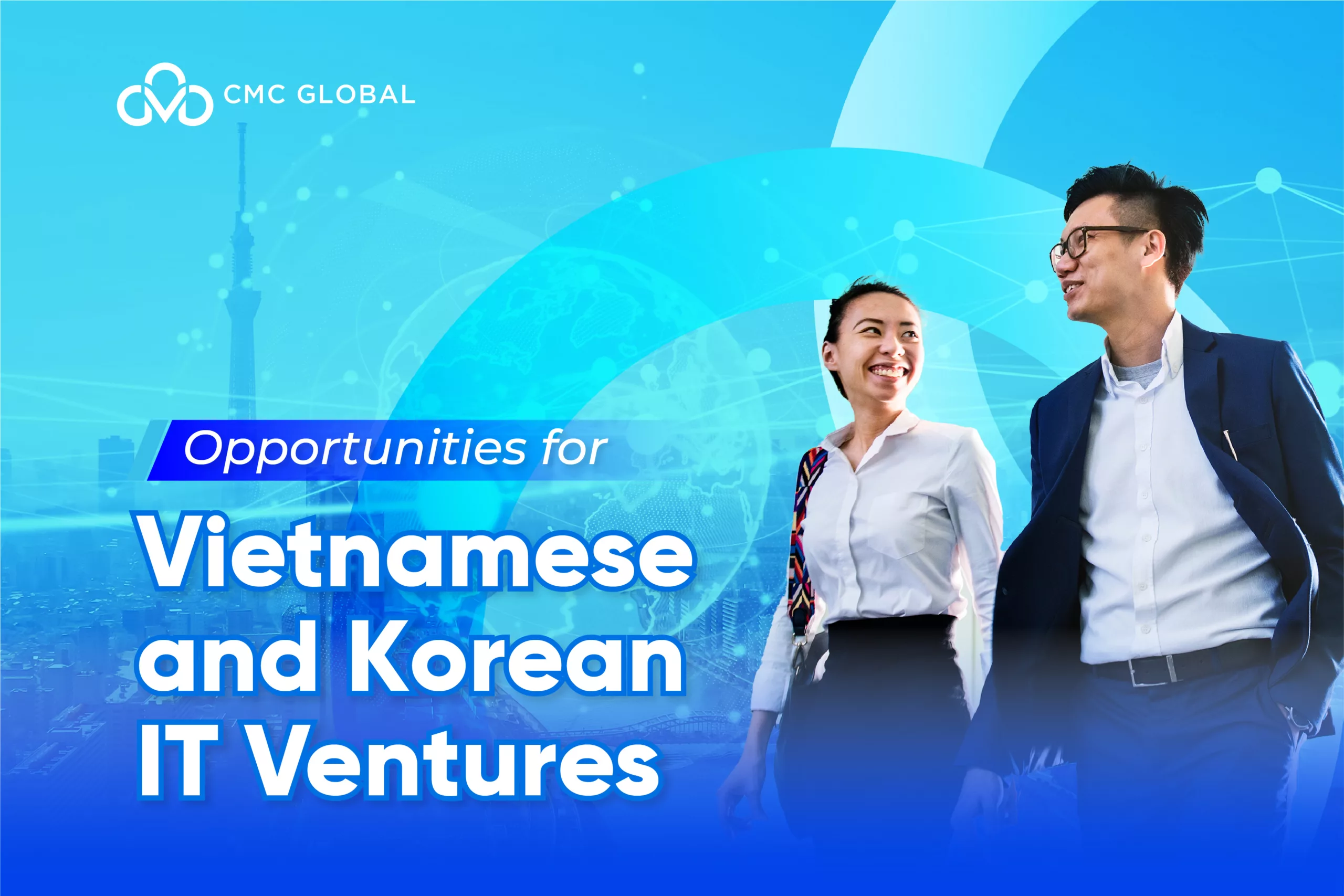In an era of digital transformation and technological innovation, Korea and Vietnam emerge as vibrant hubs within the global IT landscape. With a shared commitment to excellence and an ecosystem of talent and innovation, these nations stand at the forefront of the digital revolution. As we delve into the potential and opportunities for IT companies in Korea and Vietnam, we uncover numerous possibilities shaped by collaboration, innovation, and strategic foresight.
Join us on a journey to explore the dynamic landscape of the IT sectors in Korea and Vietnam, where boundless opportunities await those poised to embrace the future of technology.
Understanding Vietnam’s IT Industry

The overview of Vietnam’s IT landscape reveals a dynamic and rapidly evolving sector poised for significant growth and innovation. Over the past decade, Vietnam has emerged as a key player in the global IT industry, fueled by a combination of factors including a young and tech-savvy population, favorable government policies, and increasing foreign investment.
The country has a thriving startup ecosystem, with hubs like Ho Chi Minh City and Hanoi nurturing a vibrant community of entrepreneurs and tech enthusiasts. Moreover, Vietnam’s software outsourcing industry has gained international recognition for its high-quality services and competitive pricing, attracting clients from around the world.
With a focus on emerging technologies such as cloud computing, artificial intelligence, and cybersecurity, Vietnam is strategically positioning itself as a hub for tech innovation in the ASEAN region and beyond.
Korea’s IT Sector: A Global Contender

The rise of Korea’s IT industry marks a transformative journey driven by innovation, resilience, and strategic vision. From humble beginnings, Korea has rapidly advanced into a global contender, demonstrating exceptional prowess in areas such as telecommunications, consumer electronics, and software development.
Central to this ascent are the pioneering efforts of industry giants like Samsung, LG, and Hyundai, whose breakthroughs have captured international acclaim and reshaped the technological landscape.
Fueled by a strong ecosystem of research institutions, government support, and a highly skilled workforce, Korea’s IT area stands as a beacon of excellence, continuously pushing barriers and setting new benchmarks for the world to follow.
Read more: A Closer Look At Korea ICT Industry
A Comparative Analysis Between Vietnam vs. Korea
Strengths and Weaknesses

Vietnam’s strengths lie in its competitive labor costs, rapidly growing tech talent pool and government support for the IT sector. The country offers a favorable business environment with relatively low operating costs, making it attractive for foreign investment. Additionally, Vietnam benefits from a young and tech-savvy population, providing a strong foundation for innovation and entrepreneurship.
However, weaknesses such as infrastructure limitations, particularly in rural areas, and intellectual property rights concerns pose challenges for the industry’s long-term sustainability.
On the other hand, Korea boasts a robust infrastructure, advanced technological capabilities, and a well-established reputation for quality and innovation. Leading Korean conglomerates like Samsung and LG have set global standards in electronics and telecommunications, driving the country’s technological advancements. Moreover, Korea’s strong government support for research and development (R&D) initiatives fosters a culture of innovation.
However, Korea faces challenges related to an aging population and a highly competitive domestic market, which may limit growth opportunities in certain sectors.
Market Size and Potential

Korea’s IT market is relatively mature and boasts a high level of consumer adoption of technology products and services. With a population of over 51 million people and a strong economy, Korea offers a sizable market for IT products and services. Furthermore, Korean companies have a strong presence in international markets, contributing to the country’s export-driven growth strategy.
Vietnam, although smaller in terms of market size compared to Korea, is experiencing rapid digitalization and increasing internet penetration rates. With a population of nearly 100 million people and a growing middle class, Vietnam presents significant opportunities for IT companies, particularly in areas such as e-commerce, digital payments, and mobile applications. Moreover, Vietnam’s strategic location in Southeast Asia positions it as a gateway to the region’s emerging markets, offering access to over 650 million consumers.
Talent Pool and Workforce Dynamics

As per a recent publication by the Ministry of Employment and Labor and the Korea Research Institute for Vocational Education and Training, South Korea is projected to face a deficit of more than 50,000 employees in the upcoming five years across four burgeoning technology fields: artificial intelligence (AI), cloud computing, big data, and nanotechnology.
This shortfall is expected to present a challenge, especially for small and medium-sized enterprises (SMEs) and startups, where retaining skilled personnel can be problematic. To address this challenge, the report recommends enhancing advanced training initiatives for the staff and actively leveraging the talents of international students.
The Korea Carbon and Nano Industry Association suggests that the government should consider the option of recruiting engineering students from countries like Vietnam and Thailand to work in small and medium-sized enterprises (SMEs) and startup companies across Korea. This initiative aims to relieve the shortage of skilled labor in the country.
Vietnam’s IT workforce stands as a valuable asset that can significantly bolster Korea’s digital transformation journey. With its youthful population and growing pool of skilled professionals, Vietnam offers a rich talent pipeline adept in various aspects of software development, cybersecurity, and digital infrastructure. By tapping into Vietnam’s vast talent pool, Korean companies can supplement their workforce with diverse skills and expertise, accelerating the pace of innovation and digital adoption.
Moreover, Vietnam’s cost-effective labor market presents opportunities for Korean firms to optimize operational efficiency and cost-effectiveness in their digital transformation endeavors. Collaborative initiatives between Korean and Vietnamese IT professionals can foster knowledge exchange, drive technological advancements, and propel Korea toward its vision of becoming a global leader in digital innovation.
Government Initiatives

The robust economic partnership has been the cornerstone of the relationship between Vietnam and South Korea, bolstered by the Vietnam-Korea Free Trade Agreement (VKFTA) implemented in December 2015. By the end of 2021, South Korea had emerged as Vietnam’s primary foreign investor, with registered capital totaling US$78.5 billion.
Korean investments cover various economic sectors, including processing, manufacturing, real estate, retail, and construction. With a population exceeding 99 million and an average GDP growth rate of 5.33% from 2017 to 2023, Vietnam is an attractive entry point for Korean investors aiming to expand their presence in Southeast Asia, particularly the Mekong subregion.
Major South Korean conglomerates like Samsung, SK, LG, Lotte, and Hyundai have expanded their presence in Vietnam, strengthening economic ties between Seoul and Hanoi. For instance, Samsung, Vietnam’s largest foreign direct investor, has injected $18 billion into the country and aims to increase this to $20 billion.
The trend of South Korean firms shifting their manufacturing bases to Vietnam has accelerated recently, partly driven by the need to diversify away from China amid disruptions triggered by the US-China trade tensions. Vietnam’s stable economic climate and favorable policies towards foreign direct investment have positioned the nation as a favored destination for Korean businesses seeking expansion opportunities.
Opportunities for Collaboration
Opportunities for collaboration between IT companies in Korea and Vietnam abound, presenting a mutually beneficial pathway for growth, innovation, and market expansion. These collaborations capitalize on the strengths of both nations’ IT sectors and leverage synergies to unlock new opportunities. Here are several key areas where collaboration can flourish:
#1 Technology Transfer and Knowledge Exchange

Korean companies possess advanced technological expertise and innovative capabilities, which can be transferred to Vietnamese partners through collaborative initiatives. By sharing best practices, technical know-how, and industry insights, Korean firms can help Vietnamese counterparts enhance their capabilities and competitiveness in areas such as software development, telecommunications, and digital infrastructure.
#2 Joint Product Development
Collaborative product development ventures enable Korean and Vietnamese IT companies to combine their expertise and resources to create innovative solutions tailored to regional and global markets. By leveraging each other’s strengths in areas such as hardware manufacturing, software development, and user experience design, joint ventures can accelerate the pace of innovation and deliver cutting-edge products and services to customers.
#3 Market Access and Distribution Networks

Korean companies can partner with Vietnamese firms to gain access to Vietnam’s rapidly growing market and distribution networks. Similarly, Vietnamese companies can leverage partnerships with Korean counterparts to access the global market through Korea’s established trade relationships and distribution channels. By collaborating on market entry strategies and leveraging each other’s networks, companies from both countries can expand their reach and increase their market share.
#4 Research and Development (R&D) Collaboration

Collaborative R&D initiatives enable Korean and Vietnamese companies to pool their resources and expertise to address common challenges and pursue shared opportunities. By co-investing in R&D projects focused on emerging technologies such as artificial intelligence, blockchain, and cybersecurity, companies can accelerate innovation, drive technological breakthroughs, and stay ahead of the curve in a rapidly evolving IT landscape.
#5 Talent Exchange and Capacity Building
Collaborative initiatives can facilitate talent exchange programs, internships, and training opportunities between Korean and Vietnamese IT companies. By nurturing a pipeline of skilled professionals and fostering cross-cultural exchange, these programs can enhance the capabilities of both nations’ IT sectors and cultivate a vibrant ecosystem of talent and innovation.
Consider Working With An Experienced Partner In Digital Transformation
Founded in 2017, CMC Global builds upon the foundation and successes of CMC Technology Group, establishing itself as a leading technology services provider in Vietnam.
To become the leading enterprise in consulting and implementing Digital Transformation solutions (Top DX Service Provider), CMC Global directs its resources toward solving diverse technological challenges across various industries in the Asia Pacific region, Europe, and America, gradually realizing the aspiration of bringing Vietnamese IT products, solutions, and services to the international market.

As an AWS Advanced Tier Services Partner, CMC Global stands at the forefront of cloud innovation, ready to guide organizations through the dynamic realm of AWS Managed Services. With a commitment to excellence and a proven track record, CMC Global offers comprehensive solutions designed to elevate your cloud experience.
Our team of certified experts brings proficiency in AWS technologies, ensuring a seamless integration of cloud solutions customized to your business needs. From strategic planning to ongoing optimization, CMC Global serves as a trusted companion on your cloud journey.
Contact us for further details!




